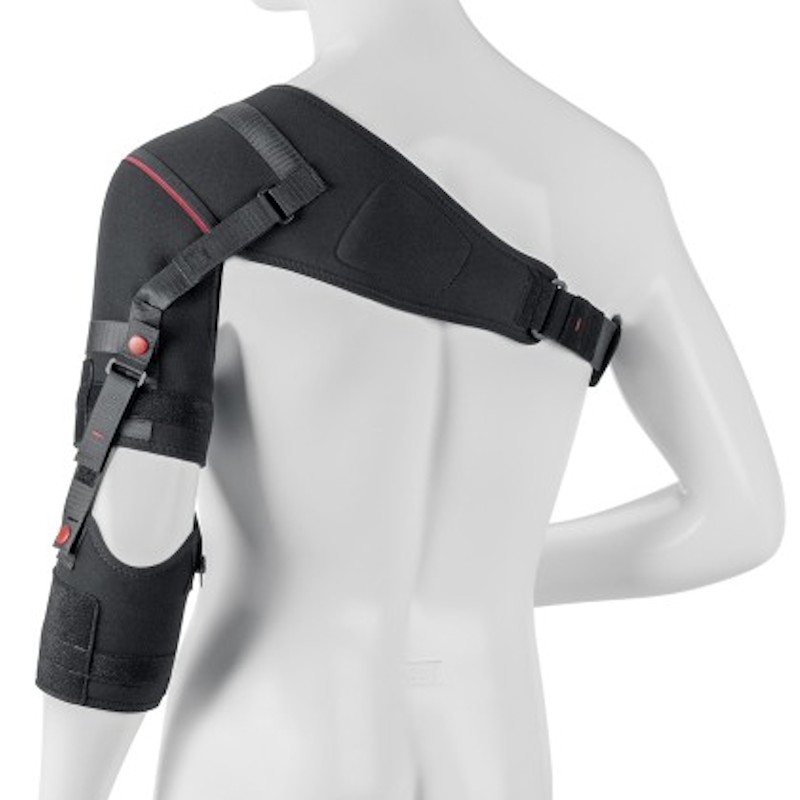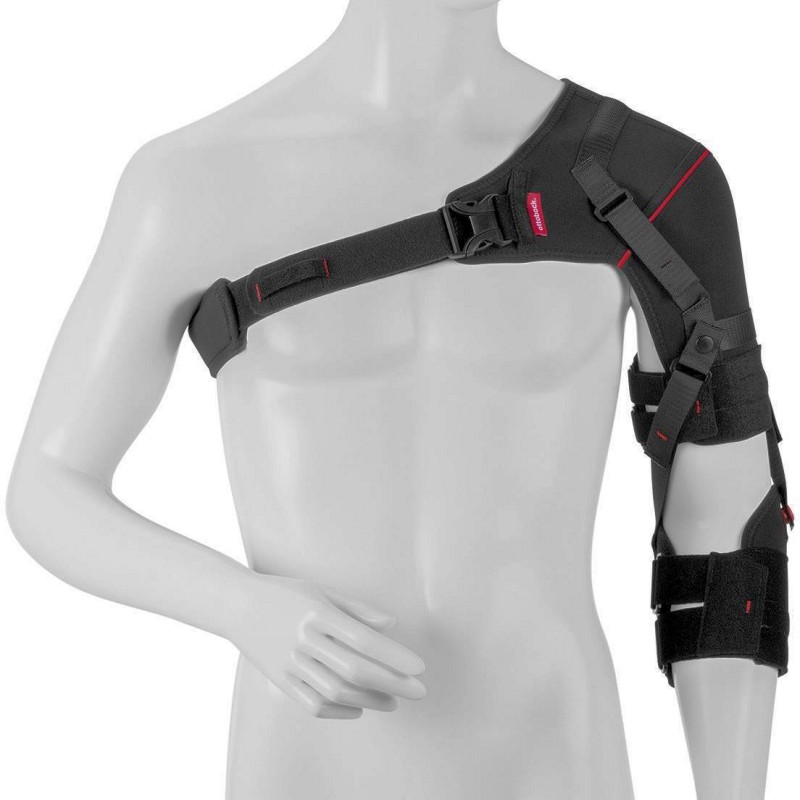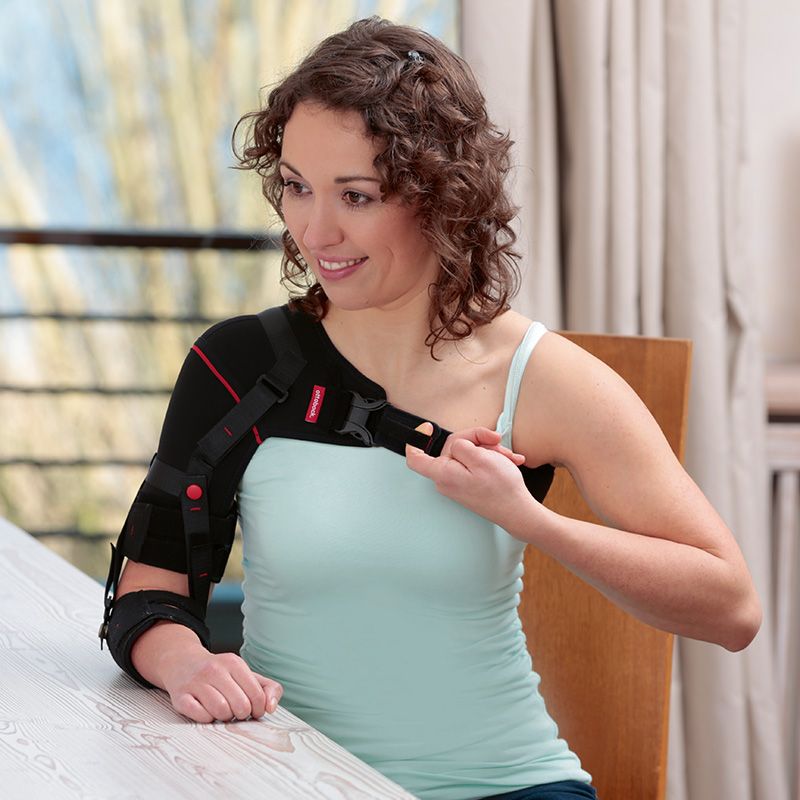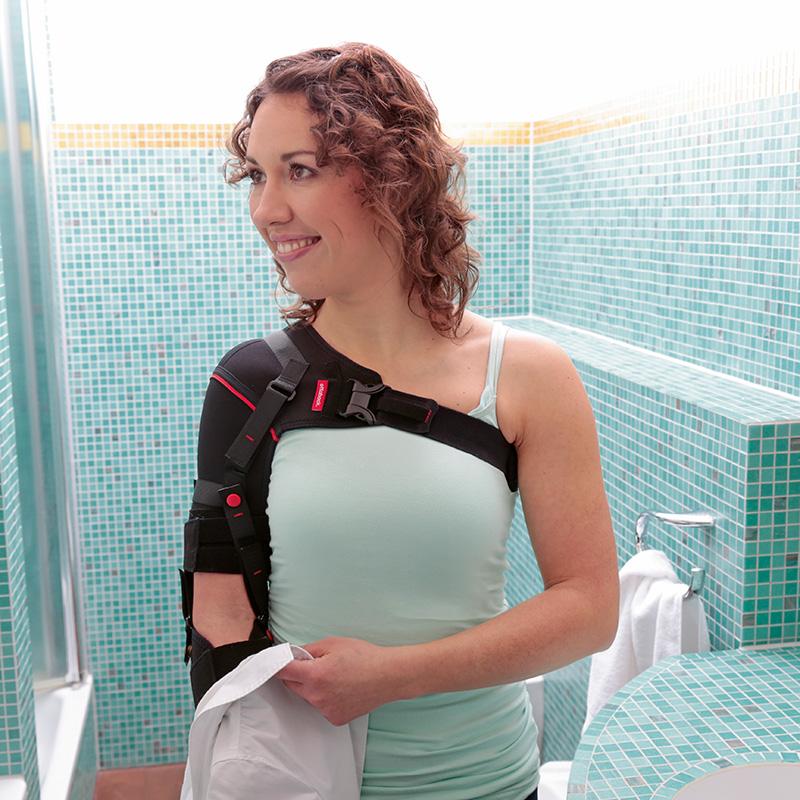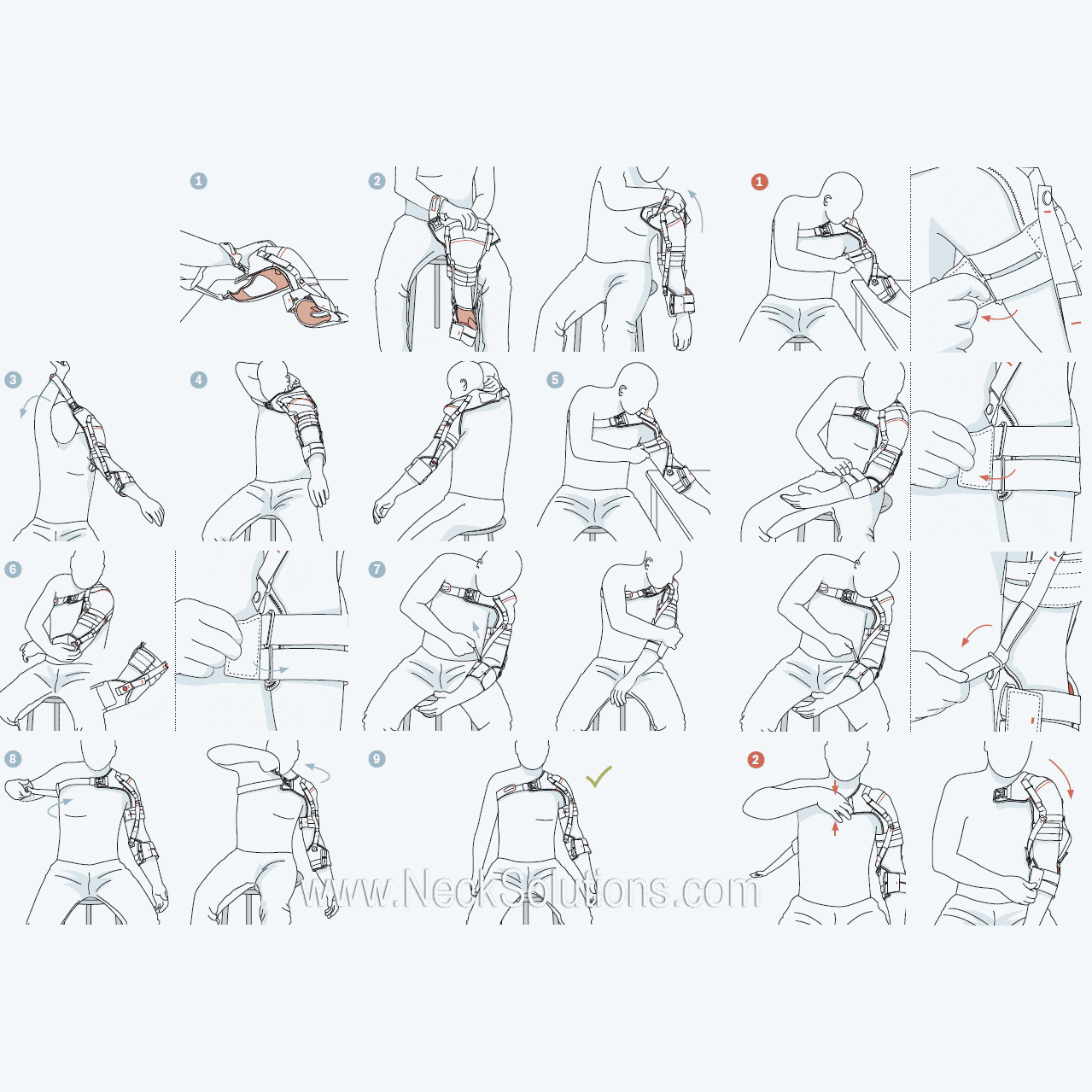Shoulder Stabilizer Brace
$189.99
The Shoulder Stabilizer Brace Provides Noticeable Relief And Alleviates Pain Caused By The Malposition Of Your Shoulder Joint. By Bringing Your Shoulder Into A Better Position, The Orthosis Combats The Cause Of Your Complaint. Corrects The Alignment Of The Humerus Head With The Joint Socket And Therefore Alleviates The Cause Of The Pain. It Helps Stabilize The Shoulder And Position It Correctly Again
Thanks To Its Special Design, You Can Put On The Brace Yourself With Just One Hand. Colored Snap Fasteners Make It Easier To Put It On Correctly. Your Therapist Or Health Care Professional Will Adapt The Orthosis To Your Individual Needs – Required.
Ships Free USPS/UPS To U.S. Custom/Made to order – Non Returnable. Takes 5-7 Business Days To Ship.
Shoulder Stabilizer Brace – Highest Levels Of Support & Functionality
Being a comfortable orthotic device for the shoulder, the shoulder stabilizer brace is unique in that is positions as well as supports the shoulder that is painful, weak or partially paralyzed, and greatly facilitating rehabilitation.
Ships in 6-10 business days. PDAC Verified/HCPCS Coding: L3670 OTS
The stabilizer brace is employed for early stages of rehabilitation including specific muscle as well as functional training promoting proper use of the arm. The shoulder stabilizer brace is additionally useful in later stages of rehabilitation. New color is black with upgraded temperature regulating material and easier to put on by yourself.
Particularly useful for treating those individuals who have suffered a stroke for reintegration in professional as well as social environments.
Measuring

Indications
- stroke
- hemiplegia
- cervical disc prolapse
- brachial plexus injuries
- peripheral nerve damage
This brace has been engineered specifically for those individuals who suffer the dysfunction from partial dislocation and shoulder pain from neurological conditions like a painful shoulder resulting from muscular paralysis of the shoulder region, injuries to the brachial plexus, which is a bundle of nerves in the shoulder area as well as cervical disc herniation. Damage to peripheral nerves in the region of the shoulder as well as the neck. Painful shoulder resulting from functional alterations from partial paralysis. In cases of extreme weakness, seen with a condition called flaccid paralysis, the top bone of the shoulder called the head of the humerus is often incorrectly positioned, often referred to as a subluxation, which may result in levels of pain, reactive muscular spasm of dysfunction, as well as resulting damage to the joint.
The Shoulder Stabilizer Brace Is A Specialty Brace
Developed by collaborating closely with doctors and therapists for wearer comfort and optimum functionality as a functional tool for the process and stages of rehabilitation process, facilitating active movements.
The brace is a specialty brace and we are often referred by therapists as it will need to be fitted by a therapist and requires assistance for proper application as well as education for its use by the individual and caregivers.
This shoulder brace is assured the highest quality in materials and design by Ottobock and is effective regarding rehabilitation in shoulder pain as well as dysfunction after stroke an injury of the peripheral or central nerve system and correctly positions the arm without the unwanted effects of motion restriction.
How Does The Brace Work?
The shoulder stabilizer brace relieves loading if the shoulder to offer pain relief as well as improved posture of the body resulting in better motion patterns by enhancing control of the sensorimotor system in addition to needed shoulder support. By employing 2 sections; a cuff for the shoulder as well as the forearm, connected using straps, it maintains the shoulder bone or humeral head correctly within the socket of the shoulder joint. This is required to provide the biomechanical cooperation of the shoulder during motion. The shoulder stabilizer brace offers supports of the arm within an extended posture using mild external or outside rotation, to counteract development of a posture where the arm in held in a common position of flexion with inside or internal rotation.
Putting On The Brace By Yourself
Benefits
Employ the shoulder stabilizer brace to support the soft tissues and establishing the proper physiological positioning of the shoulder joint. The benefits are prevention of strain of the joint capsule, supporting ligaments, muscles and connecting tendons, sensitive nerves, and the resulting development of arthritis secondary to this instability and strain of forces, producing pain and further problems.
As the pain is relieved, functional shoulder rehabilitation. The shoulder stabilizer brace positions the shoulder bone within the biomechanical constraints of normal posture related to the head of the humerus offering pain relief, reduction of reactive muscle spasm and correct motion for activity regarding the arm and shoulder girdle, which can affect the entire upper body and neck.
The shoulder stabilizer brace will support as well as center the shoulder joint correcting the displacement or misalignment of the joint or subluxation and inside or internal rotation, allowing better range of motion and us of the arm. Using an provides an anatomical fitting, it prevents harmful motions, which can further damage the structures of the shoulder, improving gait patterns of motion for normal motion and proper feedback and allows better posture. Active rehabilitation is enhanced and improved with better patient compliance as the patient can concentrate on regaining proper walking ability with less concern regarding the shoulder.
 |
The brace is a solution for many stroke patients. As a valuable tool for rehabilitation, active movement is promoted. Shoulder pain not uncommon following a stroke or other illnesses. Here, the humerus is in an unfavorable position. The brace places it into the correct position, thus eliminating the cause of the pain. This is important to start early, targeted rehabilitation. The goal is to help reintegrate as quickly as possible into your familiar social and work environment. |
 |
The brace consists of 2 parts – 1) shoulder cuff 2) forearm cuff. They are interconnected by two straps. The brace covers a large area of the shoulder region, positively effecting proprioceptors. These benefit the perception of how the shoulder is moved in space and what posture is assumed. This helps to improve the overall body posture, which in impacts a uniform and smooth. A muscle stimulating pad easily attaches inside the brace with a hook-and-loop fastener for additional stimulation to weakened muscles. |
Bracing Details & Results – Old Style Material
Main Features
It has a substantial surface coverage to influence proprioceptors for a helpful effect regarding the sensori-motor system. There is no need to remove the brace with motion training for rehabilitation. There is a band of silicon inside the brace to help reduce gliding, securing stable function. Color coded buttons for ease of application. The advance material used regulates temperature extremes permitting longer use in comfort, promoting better compliance with using the brace. The edges are soft to avoid skin irritation. It is machine washable.
Proven Benefits
Scientific evidence provides proven benefits for the shoulder stabilizer brace as indicated in the 1995 publication in the Archives of Physical Medicine and Rehabilitation, in preventing subluxation of the shoulder joint after stroke.
In treating significantly affected arm after a stroke with shoulder pain, the brace or orthosis is worn directly on the skin. The design permits motion of the forearm, namely supination and extension, allowing greater motion during rehabilitation. When using the brace, subjects noted high levels of comfort. Those subjects noted a reduction of shoulder pain and those who had subluxation saw a complete reduction within 4 weeks of using the brace. The authors noted the benefit of shoulder pain relief. The rate of shoulder pain during early rehabilitation following stoke sufferers is as much as 40%. This pain is related to a less favorable and longer rehabilitation. When this happens along with having the hand swollen, it is called a “shoulder hand syndrome”. Factors contributing to this problem are the shoulder pain with the misalignment or subluxation of the shoulder joint. The weakness of the muscles is responsible for this misalignment and lack of stability causing muscle spasms and restricted motion.
High levels of weakness of the shoulder following stroke seen with a flaccid type of paralysis, as opposed to the spastic type, is seen more with early rehabilitation and associated with this weakness of the entire shoulder girdle, subluxated shoulder and consecutive resulting injuries to the soft tissues like muscles, tendons and ligaments.

Easing pain and the rehabilitation process along with advanced design and materials makes the shoulder stabilizer brace a leader in professional standards. Although we do not accept insurance payment directly, you can fill out the papers yourself or with the help of your doctor or therapist and, with a prescription from your doctor, your insurance company will reimburse you within the limits of the policy. Many companies who claim to accept insurance policies do charge you the remainder of what is not paid or charge exorbitant fees for the product. You can call, or have your doctor/therapist find out your specific benefits.
Additional information
| Side | Left, Right |
|---|---|
| Stabilizer Size | Large 40.6 – 43.3 in, Medium 37.8 – 40.2 in, Small 34.3 – 37.0 in, XLarge 43.7 – 46.5 in, XSmall 31.1 – 33.9 in, XXSmall 28.7 – 30.8 in |
